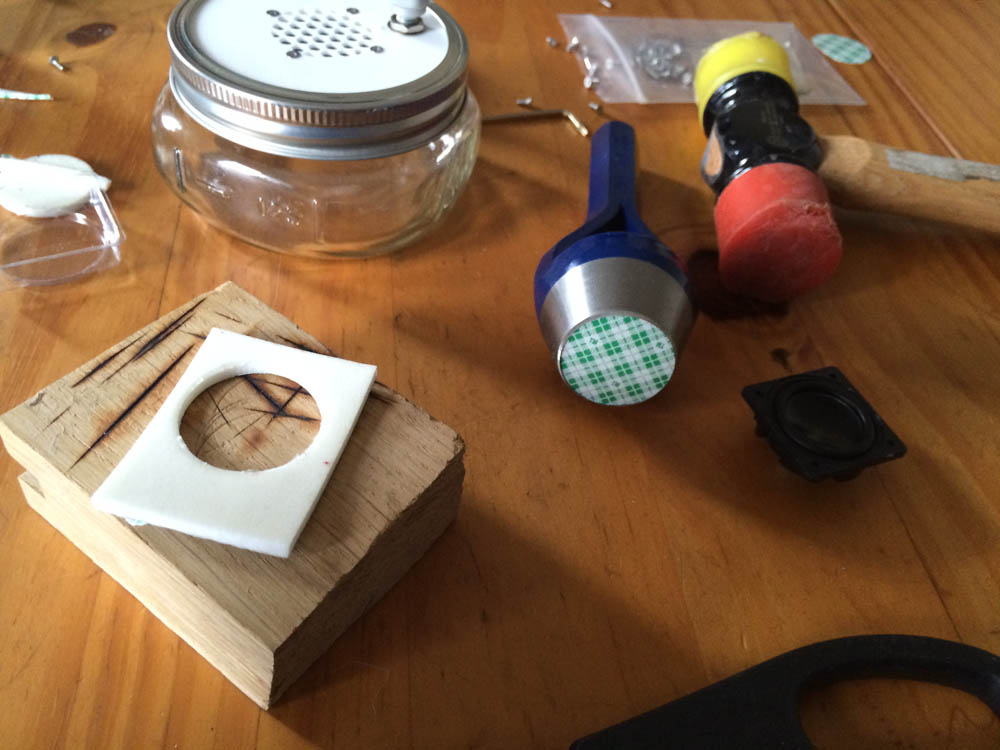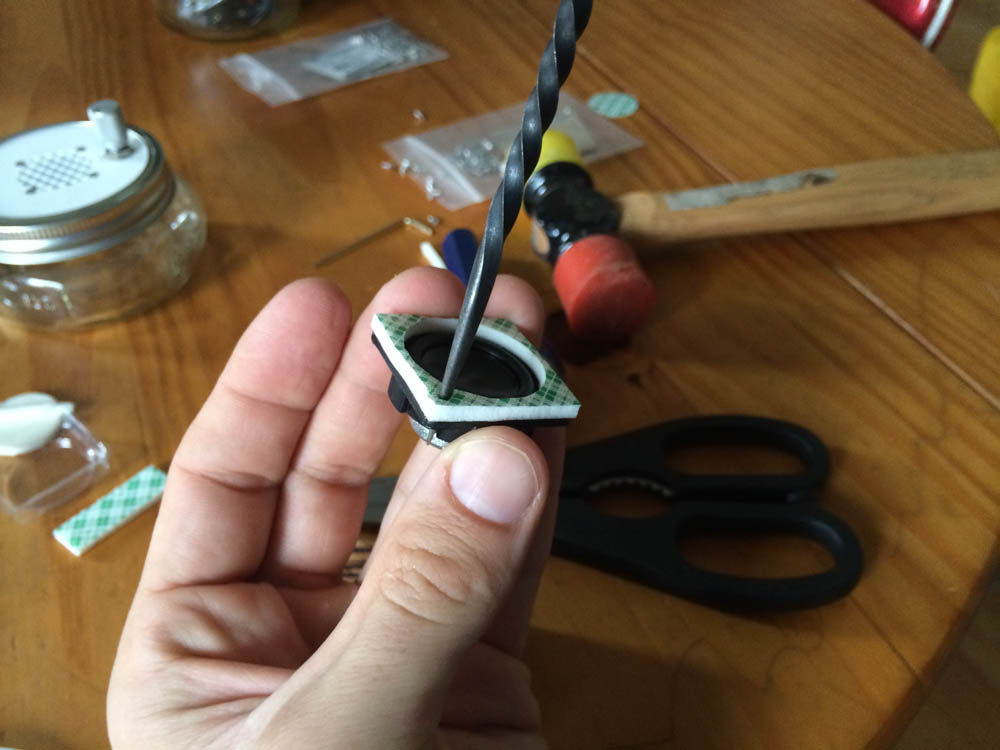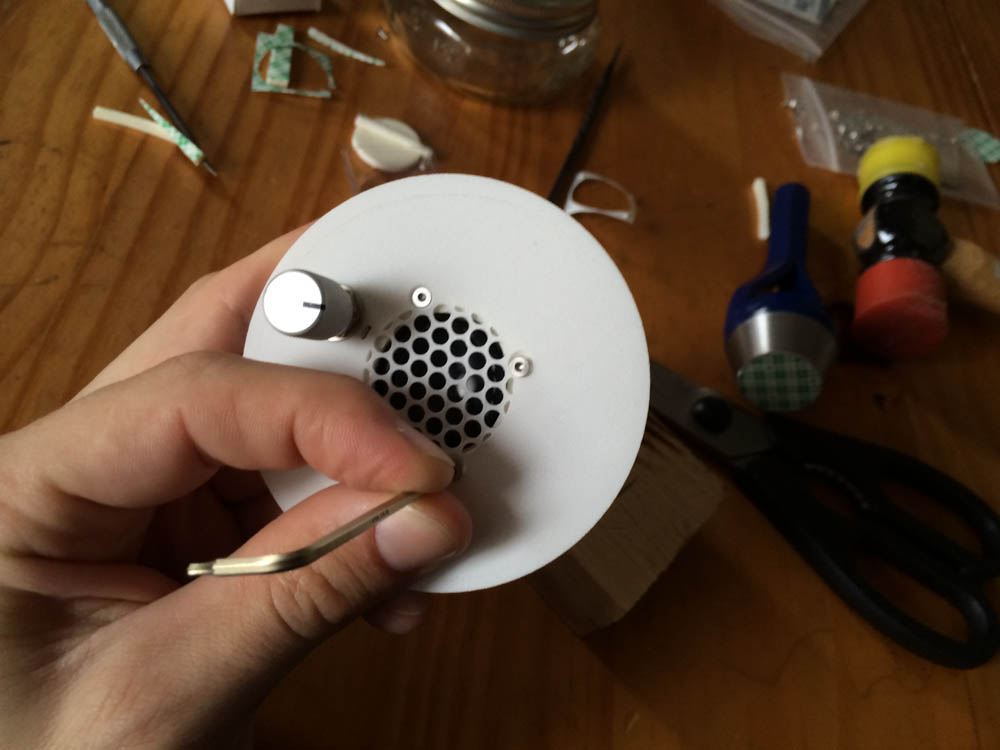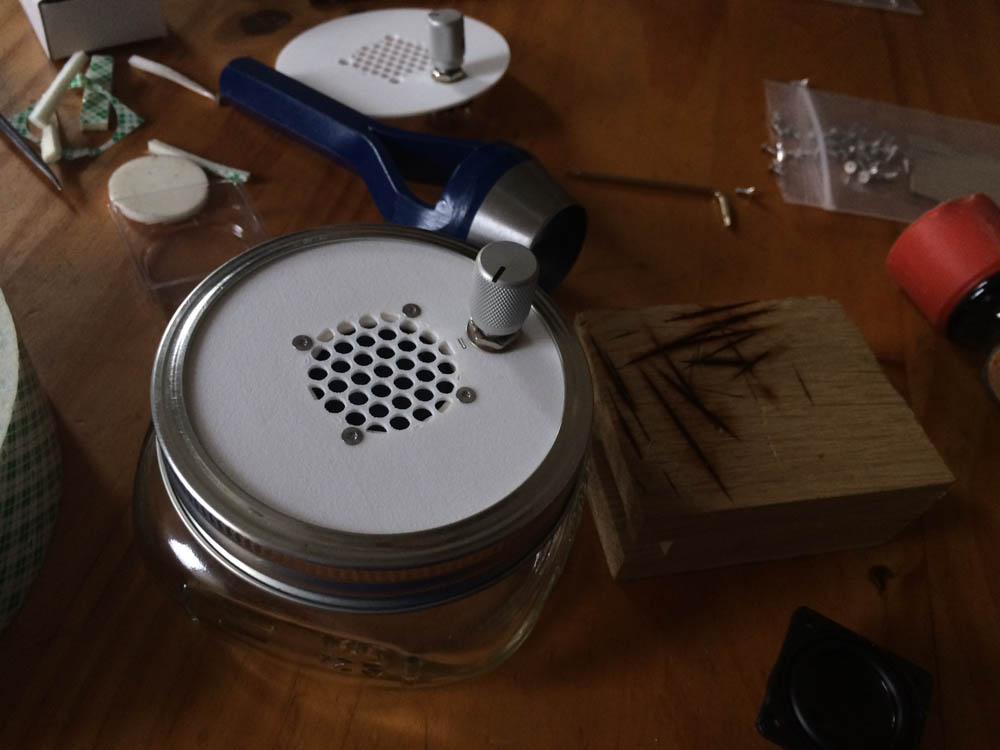Today is potentiometerday.
The Public Radio has one knob on it: a switched single-gang potentiometer. The switch turns the entire device on, and the pot adjusts volume.
The plan originally was to get a PCB mount pot, and hang all of the electronics on it. That ended up causing troubles re: fitting everything into the jar, though, so we changed directions a bit. At the moment, the goal is to find a pot with solder lugs. It'll be panel-mounted to the lid of the radio, and will have five wires going from it down to the circuit board. My hope is that this isn't *too* labor intensive to assemble... we'll see soon.
Ideally, we'd be using a 10k pot with a logarithmic (audio) taper. The theory goes that the human ear has a logarithmic response to sound pressure, and so audio should be controlled along a logarithmic curve. From a great article called "The Secret Life of Pots":
Volume controls are different. The human ear does not respond linearly to loudness. It responds to the logarithm of loudness. That means that for a sound to seem twice as loud, it has to be almost ten times the actual change in air pressure. For us to have a control pot that seems to make a linear change in loudness per unit of rotation, the control must compensate for the human ear's oddity and supply ever-increasing amounts of signal per unit rotation. This compensating resistance taper is accurately called a "left hand logarithmic taper" but for historical reasons has been called an audio or log pot. In these pots, the wiper traverses resistance very slowly at first, then faster as the rotation increases. The actual curve looks exponential if you plot resistance or voltage division ratios per unit of rotation.
As it turns out, finding a logarithmic pot in the configuration I want is rather difficult. I spent a while searching and ended up buying a little selection of pots - some linear and some logarithmic; some PC pin and some solder lugs; with various shaft conditions and body styles. I tried them all out, testing for knobfeel and comparing price, availability, and usability. The results were interesting, and to my delight the pot that I liked best ended up also being one of the least expensive and most readily available. It's a 10K linear taper with a 6mm flatted shaft and solder lugs.













